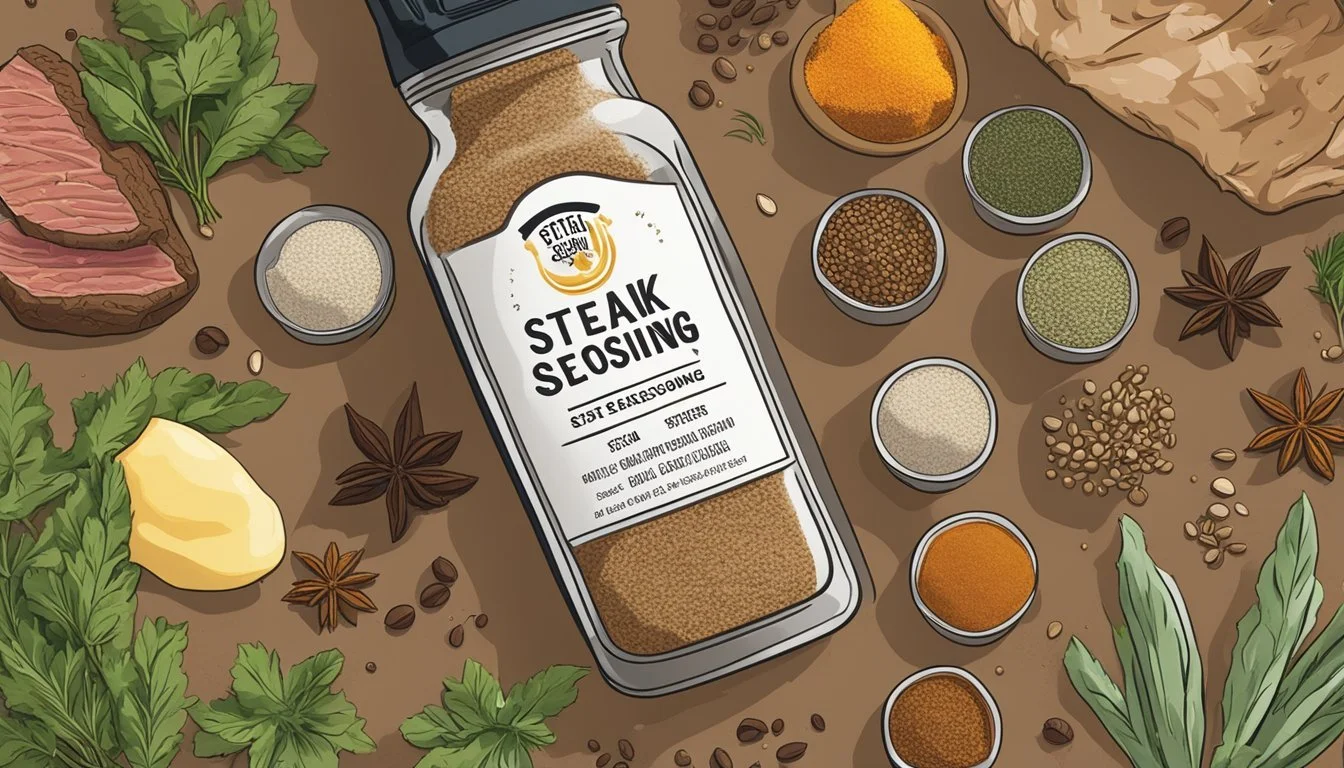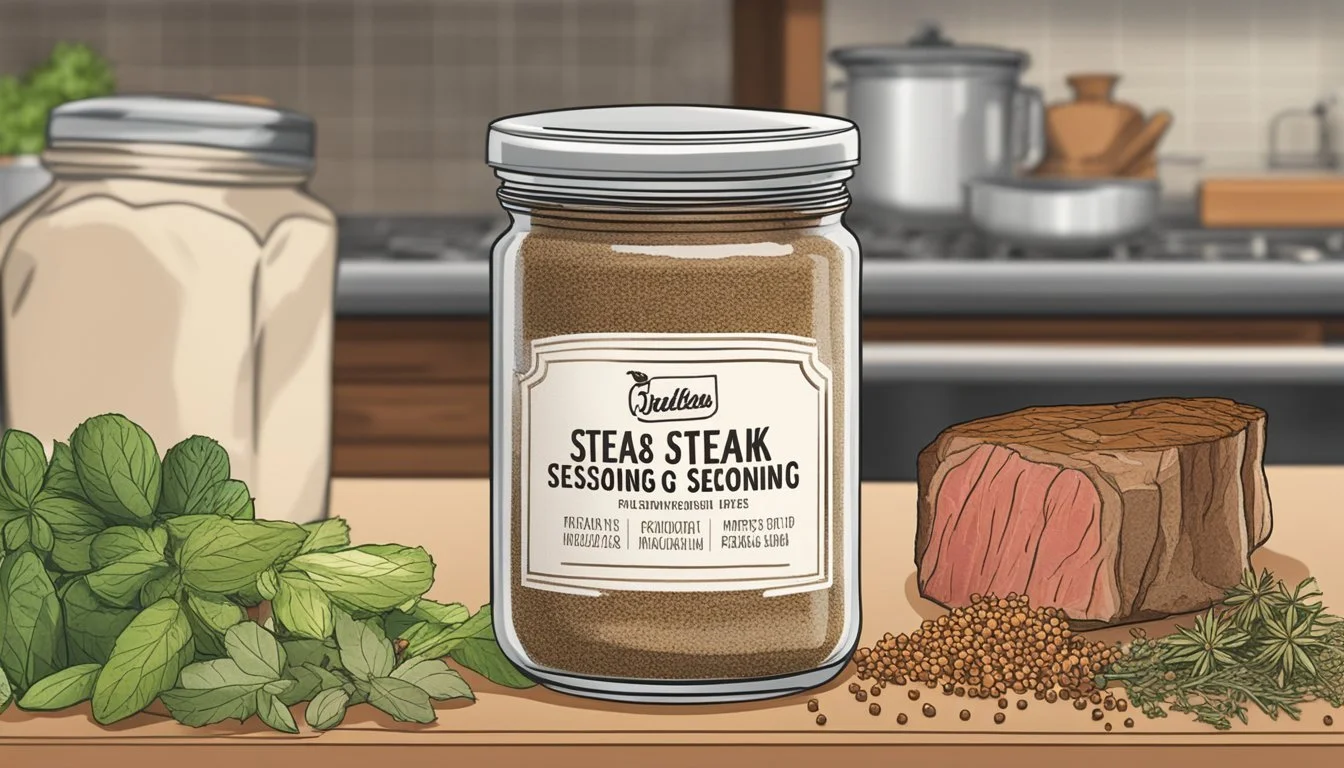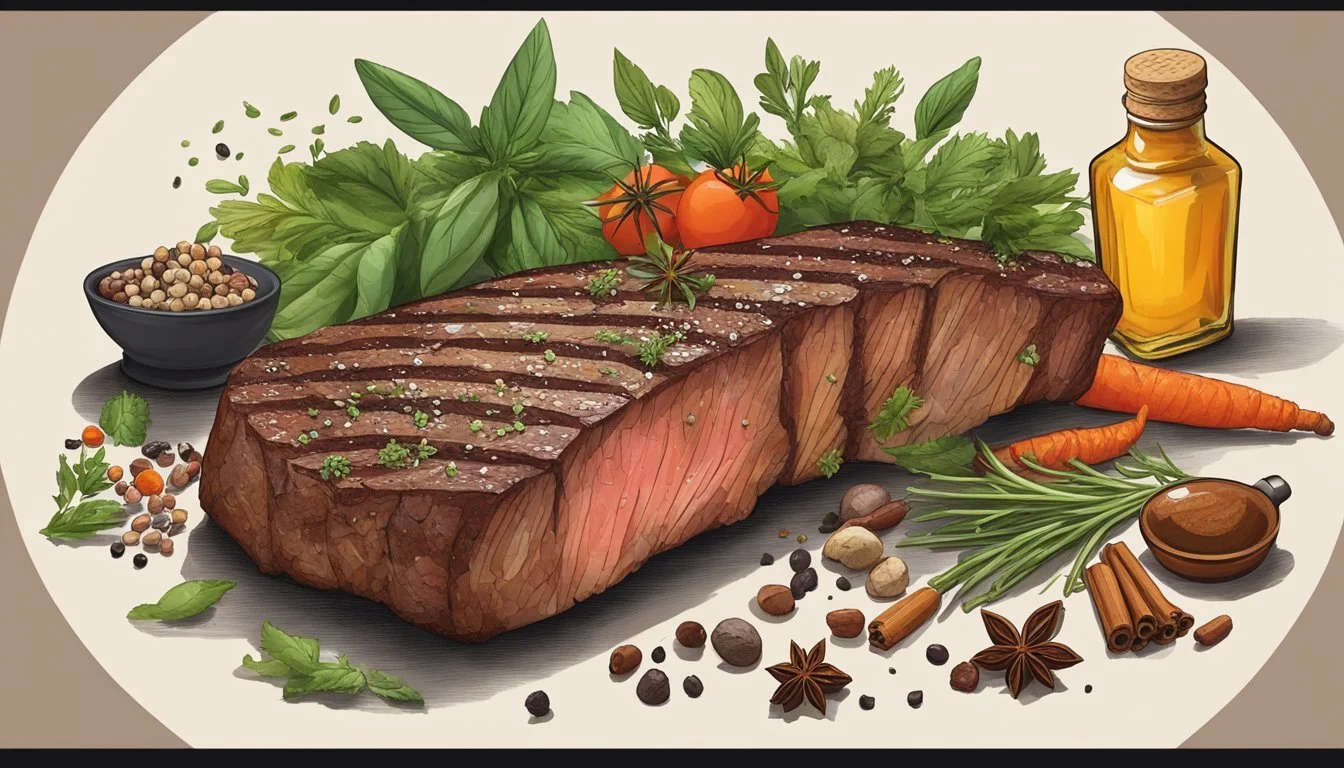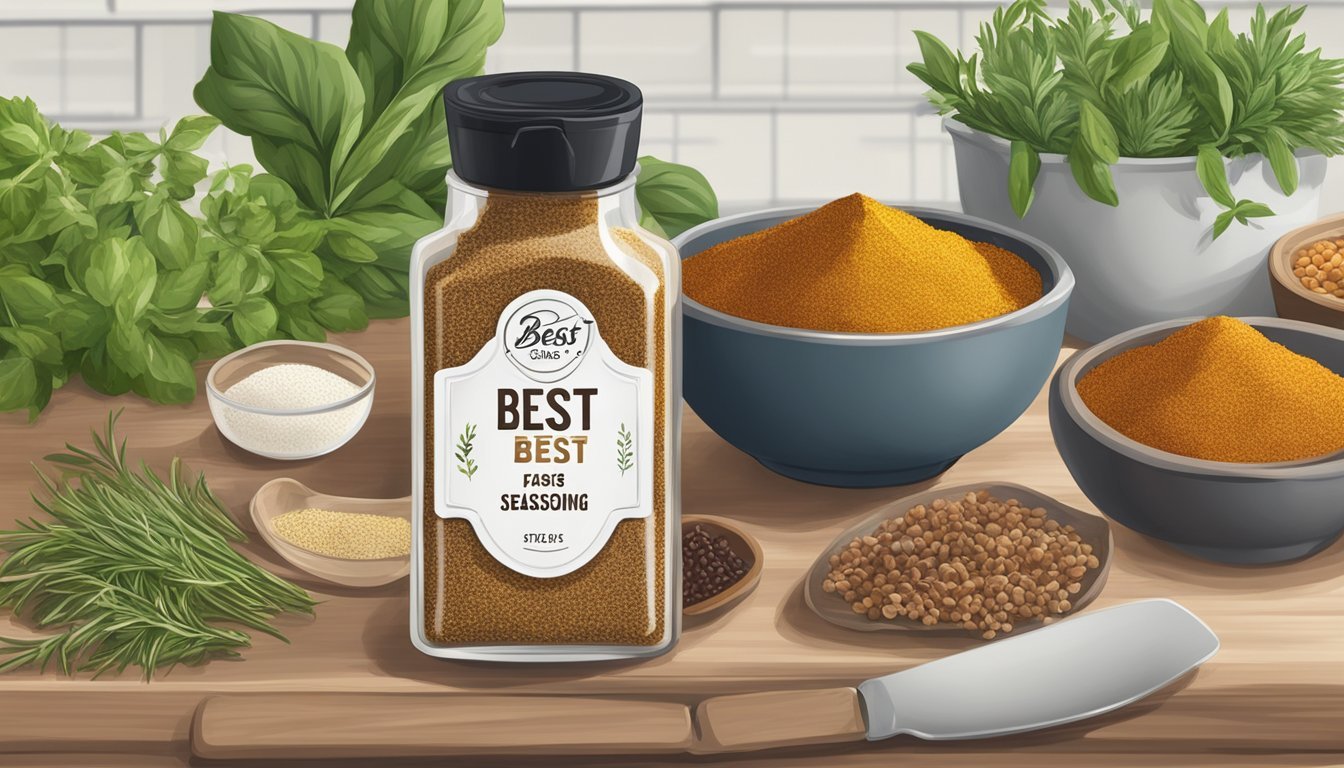Does Steak Seasoning Expire?
Shelf Life and Storage Tips
When it comes to maintaining the flavor of your steak seasoning, knowing how long it lasts is crucial. Steak seasoning can retain its potency for up to three years if stored correctly in an airtight container away from light, moisture, and heat. Over time, exposure to these elements can gradually diminish the seasoning's effectiveness, affecting the quality of your flavorful steaks.
Understanding the shelf life of steak seasoning isn't just about taste; it's also about safety and ensuring the best culinary experience. Though the seasoning won't spoil or become unsafe, its potency will wane, resulting in a less robust flavor profile for your dishes. This is especially true for popular blends like Montreal Steak Seasoning, which, while safe past its expiration date, loses its characteristic punch over time if not properly stored.
To get the best out of your steak seasonings, consider rotating your stock regularly and keeping an eye on their storage conditions. Whether you're a home cook or a professional chef, maintaining the vibrancy of your spices can make all the difference in achieving that perfect sear and flavor on your steak.
Understanding Steak Seasoning
Steak seasoning plays a crucial role in enhancing the flavor of the meat, and its effectiveness depends on its ingredients and storage practices. Various key components and types of seasoning make it versatile for different preparations.
Components of Steak Seasoning
Steak seasoning typically includes salt and black pepper as its foundational elements. Salt draws out moisture and enhances natural flavors, while black pepper adds a mild heat.
Other common ingredients are garlic powder, onion powder, paprika, and cayenne pepper. Garlic powder and onion powder provide a depth of flavor, while paprika offers a mild sweetness and vibrant color.
Herbs like rosemary, thyme, and oregano can be added to introduce aromatic and earthy notes. Coriander, cumin, and chili powder are also popular for adding complexity and a touch of spice.
Types of Steak Seasonings
There are several types of steak seasonings, each catering to different tastes. Basic blends often consist of just salt and pepper or might include a touch of garlic powder.
More complex blends might add cumin, thyme, or rosemary to enhance the flavor profile. There are also regional varieties such as Cajun seasoning, which contains paprika and cayenne for a spicier kick.
Montreal steak seasoning is another popular option, featuring garlic, coriander, and dill, creating a robust and savory profile. These varieties allow for customization based on personal preferences and the type of steak being prepared.
Optimal Uses for Steak Seasoning
Proper application of steak seasoning is essential for achieving the best flavor. To start, steaks should be thawed and brought to room temperature to ensure even cooking.
Patting the steak dry with a paper towel helps the seasoning adhere better and aids in forming a crust during cooking. Generously coating the steak and letting it rest for at least 30 minutes before cooking allows the seasoning to permeate the meat.
Grilling, broiling, or pan-searing are excellent methods to cook seasoned steaks, each contributing differently to the flavor profile. Depending on the desired taste, additional herbs or spices can be added during the cooking process.
Proper Storage of Seasonings
Proper storage of seasonings is crucial to maintaining their potency and flavor. Key factors include protecting them from heat, light, and moisture, and using appropriate containers kept in optimal locations.
Impact of Heat and Light
Heat and light can degrade seasonings, causing them to lose their potency and flavor. Storing seasonings in a pantry away from direct sunlight helps maintain their quality.
Excessive heat can cause dried herbs and spices to lose essential oils, critical for flavor. Seasoning should be stored at room temperature in a cool, dark place to preserve their aromatic properties.
Choosing the Right Container
The type of container used for storing seasonings plays a significant role in their longevity. Airtight containers prevent exposure to air and moisture, key factors in maintaining the seasoning’s freshness and potency.
Glass jars with tight-fitting lids, metal tins, and vacuum-sealed bags are ideal choices. Avoid plastic containers that may absorb flavors and oils from the seasonings.
Best Locations for Storage
The location of the storage space is equally important. A pantry or cupboard that is cool and dry is most suitable. Keeps seasoning away from stoves and other heat sources to prevent the breakdown of their essential oils.
Drawers or spice racks inside a cupboard can also work well. Refrigeration is generally unnecessary for dried seasonings and can introduce unwanted moisture, diminishing their quality.
Shelf Life of Steak Seasoning
Steak seasoning, when stored properly, can maintain its potency and aroma for a long period. However, various factors affect its longevity, including whether the spices are whole or ground, how to identify deterioration, and methods to extend their freshness.
Whole vs Ground Spices
Whole spices such as peppercorns and dried herbs generally have a longer shelf life than ground spices. Whole spices can retain their flavor for three to four years, while ground spices typically last one to two years.
Grinding spices increases their surface area, which accelerates the loss of aromatic oils. Therefore, it's advisable to buy whole spices and grind them as needed to ensure maximum flavor and potency in your steak seasoning.
Signs of Deterioration
Various signs indicate that your steak seasoning may have deteriorated. Loss of Potency: The most noticeable sign is a dull or faded flavor. Aroma Decline: Fresh spices should have a strong, aromatic scent. If the aroma is weak, the spices are likely past their prime.
Another important indicator is the presence of mold or discoloration, which suggests the seasoning has been exposed to moisture and may spoil. Always check for these signs before using seasoning to ensure safe consumption.
Extending Freshness
To maximize the shelf life of steak seasoning, proper storage is crucial. Store seasoned salt, herbs, and spices in an airtight container away from light, moisture, and heat. Consider using dark glass jars or tins to block light exposure.
Another effective method is to keep spices in a cool, dry pantry rather than above the stove or near windows. This reduces the risk of moisture and temperature fluctuations. Additionally, avoid using wet utensils when scooping out your spices to prevent contamination.
By following these guidelines, you can keep your steak seasoning fresh and potent for an extended period, ensuring consistently flavorful meals.
Usage and Safety
Proper use and timely replacement of steak seasoning ensure the best flavor and safety for your dishes. While expired seasonings are often safe to use, they may lack potency and affect the outcome of your recipes.
Cooking with Expired Seasonings
Expired steak seasoning is generally safe to consume as long as it hasn't been exposed to moisture. When seasoning beef, pork, chicken, fish, or vegetables, it's important to note that the flavor may not be as robust if the seasoning is past its prime.
To test the potency, rub the seasoning between your fingers and taste a small amount. If the flavor is weak or stale, it may affect the dish's final taste. Recipes like steak sandwiches or grilled veggies rely on strong, fresh seasoning for optimal flavor.
When to Replace Your Seasonings
It's advisable to replace steak seasonings every two to three years to maintain their freshness and potency. Heat and moisture are the primary factors that can degrade the quality of seasoning blends.
Store seasonings in airtight containers, away from direct light and humidity. Regularly check the expiration dates and replace any that might have been kept beyond their recommended shelf life.
Replacing old seasonings ensures that your dishes, whether it's a rub for a steak or seasoning for veggies, deliver the flavor you expect.
Maximizing Seasoning Flavors
To get the most out of your steak seasoning, consider both the efficacy of the seasoning process and the cooking methods that can enhance the overall flavor profile. A few straightforward steps can significantly increase the richness and depth of your steak's taste.
Enhancing Seasoning Efficacy
Using fresh, high-quality seasonings is essential. Spices lose their potency over time, so check the expiration date and store them correctly. Steak seasoning should be kept in an airtight container, away from light, moisture, and heat, to maintain its effectiveness.
Ensure the steak is at room temperature before seasoning. This allows the meat to cook more evenly and absorb seasonings effectively.
Pat the steak dry with a paper towel to remove excess moisture. This step is crucial in forming a crust, which locks in flavors.
Rub the seasonings generously over the steak, ensuring an even coat. This could include salt, pepper, garlic powder, and other spices tailored to your preference. Utilizing spice rubs can create a robust flavor profile that will stand out.
Complementary Cooking Methods
The cooking method can further enhance the seasoned steak. Using a cast-iron skillet on the stove allows for precise heat control. Heat the skillet until it's very hot before placing the steak.
Add a small amount of high-smoke point oil, like canola or avocado oil, to the skillet. High heat creates a perfect sear, which caramelizes the spices and meat sugars, adding complexity to the flavor.
For additional richness, consider adding butter or compound butter during the final stages of cooking. The fat from the butter melds with the seasoning, enhancing the texture and taste.
Allow the steak to rest after cooking. This step lets the juices redistribute, ensuring a moist and flavorful end result. Slice the steak against the grain to maximize tenderness and further enhance the eating experience.
Advanced Tips
When it comes to seasoning steaks, understanding how to make your own blends, store them in bulk, and master the art of seasoning is critical. These tips ensure you get the best flavor and extend the shelf life of your seasonings.
Making Homemade Steak Seasoning
Creating a homemade steak seasoning offers control over the exact spices used. Start with a base of sea salt or coarse salt crystals. Add freshly ground pepper for its aromatic punch.
Incorporate other spices like crushed red pepper flakes, dill seeds, and caraway seeds. These ingredients provide depth and complexity. For additional flavor, consider adding toasted nutmeg and allspice.
A popular blend is Montreal steak seasoning, which combines these elements with garlic and onion powder. Balancing these spices ensures a well-rounded blend perfect for home cooks aiming for restaurant-quality steak.
Storing Bulk Seasonings
Storing your seasonings properly keeps them fresh and flavorful. Use airtight containers to prevent exposure to air and moisture.
If you purchase bulk spices, transfer them to smaller containers for daily use, and keep the main supply sealed. Glass jars with tight lids work best.
Place these jars in a cool, dry place away from direct sunlight. While some recommend refrigerating certain spices, this can cause condensation, which may spoil the seasoning. Instead, a dark pantry or cabinet is ideal.
The Art of Seasoning
Mastering the art of seasoning involves technique as well as timing. Begin by thawing your steak thoroughly and bringing it to room temperature.
Pat the steak dry with a paper towel to remove any excess moisture. This ensures a perfect crust.
Season generously on both sides with your blend, pressing it into the meat. If using coarse salt or sea salt, let it sit on a wire rack for at least 40 minutes to an hour before cooking. This allows the salt to penetrate, enhancing flavor.
Avoid seasoning directly before grilling as salt needs time to work, and doing it right before can lead to uneven flavor distribution.





